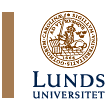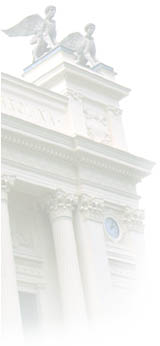

|
Panel No. 5Panel Title: Before the Divide: 'Intermediary' Genres in North Indian Literary CultureConvenor: Dr
Francesca Orsini, Cambridge University, UK Thursday
8 July, 9–12:40 & 14–16:50 Panel Abstract: The myth-making and
exclusions that were involved in the construction of a pure 'Hindu-Hindi'
and 'Muslim -Urdu' literary and cultural tradition have been discussed
at length in recent scholarship (Faruqi, King, Dalmia). The question
to be asked now is: How can we envisage the literary landscape of
north India before the divide? What does that literary landscape
suggest in terms of cultural and group identities? A new body of
evidence and new categories may be needed to handle this task. To
simply postulate a harmonious 'composite culture' before the divide
on the basis of select evidence is no longer acceptable.
Papers accepted for presentation in the panelPaper Giver 1: Francesca Orsini, University of Cambridge, UK Paper 1 Title: Qutub Shatak, Delhi and early Hindavi Paper Abstract: The "lateness" in
the beginning of literary production in Hindavi has been remarked
upon in recent revisionist studies (Faruqi and McGregor in Pollock):
while Sufis started writing in Avadhi in the 13c., nothing seems
to be found in the languages of north-Western India after Khusrau's
putative beginnings until the Sants and the early flowering of Braj
Bhasa in 15c. Gwalior and Braj. How can we "reconstruct"
the landscape of literary production in the years before the flowering
of Dakkhini, Gujri and Braj Bhasa (roughly contemporary, in the
15c)? Paper Giver 2: Thomas de Bruijn, Senior Policy Officer, Leiden University, Netherlands Paper 3 Title: Dialogism in a medieval genre: the case of the Avadhi epics Paper Abstract: In search of intermediary genres
in North Indian literature that is not ?divided? up between monolithic
and fixed cultural and political identities, the medieval genre
of the Avadhi epic provides interesting material. The composite
semantics and textual material of texts like Padmavat and Madhumalati
has been researched quite thoroughly in the last years. These works
developed in a particular cultural environment, but certainly not
in isolation. The fact that a prominent text such as Tulsidas?s
Ramacaritamanas also used parts of the aesthetical model of the
Avadhi epics raises the question whether it is possible to define
the intertextual relations between the various texts as characteristics
of an intermediary genre that responds to changes in the position
of literature in medieval Indian society. Paper Giver 3: Vasudha Dalmia, University of California, Berkeley, USA Paper 3 Title: The links between ‘Bhasha’ and ‘Braj’ Paper Abstract: From at least the fourteenth
century onwards, ‘bhasha’ or ‘bhaka’ seems to
have been an umbrella term designating many literary dialects and
registers current in Madhya Desh. Shiva Prasad Singh in his Surpurva
Brahbhasha aur uska sahitya (1958) has shown convincingly that ‘bhasha’
consisted of at least two broad linguistic streams, which could
be present in the literary corpus of one and the same poet, even
that of so clearly a nirguni sant-poet as Kabir. These two streams
were: 1) an earlier stage of Khariboli, represented by Sant Bani,
(Ramchandra Shukla was to call it Saddhukari; it was to become the
direct ancestor of modern-day Hindi) used in verse radically questioning
and subverting traditional religious authority and 2) a more easterly
literary dialect, which was used for more affective devotional verse,
later associated exclusively with Vaishnava saguna bhakti poets
emanating from the Braj area. Paper Giver 4: Allison Busch, University of North Carolina, USA Paper 4 Title: ‘Language register in the riti tradition’ Paper Abstract: This paper probes the dynamics of language register in early-modern north India through the lens of seventeenth-century poetry and scholarly writings (shastra and commentarial works) from the “riti” or courtly tradition. It is clear that, not unlike modern Hindi, Brajbhasha could tap into different vocabulary streams, and was thus susceptible to use in multiple registers. But what is not so clear is what meanings we are to assign to this phenomenon. Are there patterns of usage that can be detected and theorized within specific genres, or among different social groups of writers? For instance, in riti-period scholarly writings on literary science (alankarashastra), frequently but not exclusively written by Brahmins, we observe a predilection for Sanskrit-based lexemes; however, riti poetry itself exhibits a wide range of lexical styles, including the Persianized. Are categories such as region or religion or patronage context pertinent in theorizing the shifting registers of Brajbhasha? Or might there be other kinds of logic in operation, perhaps intellectual or aesthetic choices? What kinds of guidance do riti writers themselves provide for helping us to conceptualize the terrain of pre-colonial language use outside modernist teleologies such as bounded linguistic and religious communities? Paper Giver 5: Lalita Du Perron, School of Orienrtal and African Studies, University of London, UK Paper 5 Title: ‘The language of Khyal’ Paper Abstract: Khyal is the main genre of
Hindustani music today. Its origins are currently the subject of
new research but are likely to be located somewhere in the early
18th century, a result of the confluence of dhrupad and qawwali.
Popular opinion ascribes the “invention” of the genre
to Niyamat Khan “Sadarang”, a court composer at the darbar
of Mohammad Shah “Rangile” who reigned from 1719 to 1748.
Paper Giver 6: Christina Oesterheld, Südasien Institut, University of Heidelberg, Germany Paper 6 Title: ‘Language of women/language for women? Observations on marsiyas by Sauda and other Urdu poets’ Paper Abstract: Mirza Muhammad Rafi’ ‘Sauda’ (1713-1780) is regarded to be the second outstanding classical Urdu poet along with Mir Taqi Mir. Known today particularly for his satires, qasidas and ghazals, he is famous for his eloquence and especially for his command over the highly ornate register of Urdu which draws heavily on Persian and Arabic. Less attention has been rewarded to his marsiyas which constitute the smaller part of his works but even then quite considerable part of his works. The focus of this paper will be on women’s speech in the marsiyas, based on the analysis of selected verses. These examples will show how the poet selected a different register to represent women’s speech which is much closer to the Indic poetic tradition and to colloquial language than his usual style. It can be argued that within Urdu poetry a special variety of poetic language was designed for utterances of women which employed numerous images and words of Indic origin but adapted them to the Urdu environment of the text. We encounter this feature in marsiya texts from the ‘Karbal katha’ onward. However, not incidentally early marsiyas remained outside the orbit of the literary canon as it was developed in the late 19th century. It seems that this was done not so much to exclude the Indic tradition but to set poetry as an art form in its own right apart both from colloquial language as well as from its use for extra-literary purposes. Paper Giver 7: David Lelyveld, University of Pennsylvania, USA Paper 7 Title: ‘Traces and Mixtures: Sayyid Ahmad Khan's Account of the History of Urdu’ Paper Abstract: After a lengthy descriptive catalogue of the buildings of Delhi in the second edition of Asrar us-sanadid (Vestiges of Kings) (1853), Sayyid Ahmad Khan (1817-98) includes as an appendix an account of the Urdu language. This is then followed by a reproduction in various languages and scripts of inscriptions that he found in his exploration of the city’s past. The present paper will examine Sayyid Ahmad’s attitude to language and history during this early period of his career before the 1857 rebellion and the rise in the 1860's of the Hindi-Urdu controversy. Drawing on Sunil Kumar’s recent critique of Sayyid Ahmad’s account of the Qutb Minar in the same work, I will consider how Sayyid Ahmad’s treatment of the history of buildings, religion and political regimes might relate to his ideas about language. For one thing, Sayyid Ahmad treats language as an object of historical study to be understood in relationship to conquests, rulers, and migrations. But beyond that, he accounts for linguistic change as the achievement of exemplary literary figures, such as the 18th century poets Mir and Sauda, but also the Fort William College munshi Mir Amman, whose own account of the history of Urdu, written a half century earlier, was probably an important source for Sayyid Ahmad’s own ideas. Sayyid Ahmad’s concept of Urdu arises out of a linear concept of history and ideological assumptions rooted in Mughal culture and Persian literature. The paper will also consider Sayyid Ahmad’s account in the light of Amrit Rai and Shamsur Rahman Faruqi’s conflicting notions of the role of the late Mughal elite and the early British colonial authorities in advancing a concept of Urdu as built on past claims of Muslim hegemony. To what extent were Sayyid Ahmad's ideas of history and linguistic ideology in the early 1850s a staging ground for the subsequent "divide" or are they perhaps expressions of a more pluralist and cosmopolitan concept of language and literature? Paper Giver 8: Valerie Ritter, University of Chicago, USA Paper 8 Title: Networks, patrons, and genres for late Braj poets Paper Abstract:This paper’s subject matter
constitutes a coda to the panel’s examination of literature
‘Before the divide’: Braj Bhasha poetry in the late 19th
and early
SASNET - Swedish South Asian Studies Network/Lund
University
|

